In 2019, Mohsen Mousavi gave us an insight into the visual effects work at Scanline VFX for the eighth season of Game of Thrones. Since then, he has contributed to projects such as The Rescue, Shadow and Bone, and Lisey’s Story. His move to DNEG in 2022 led him to work on the Netflix film, Nyad.
How did you and DNEG get involved on this show?
DNEG was approached by Netflix to bring their decades long expertise and undertake a unique challenge. A level of complexity rarely seen in a biopic.
Throughout my career, I have supervised numerous digital water-intensive shows such as The Meg, Game of Thrones: Season 8, 300 – Rise of an Empire, and Independence Day: Resurgence, among others. Consequently, I was assigned to supervise this project at DNEG.
How was the collaboration with directors Jimmy Chin & Elizabeth Chai Vasarhelyi and VFX Supervisor Jake Braver?
Jimmy and Elizabeth’s background in documentary filmmaking necessitated zero tolerance for elements that looked computer-generated or that lacked complete believability. This requirement became a guiding principle. Our collaboration with Jake Braver, Production VFX Supervisor, was highly productive. He played a crucial role in ensuring that we were creatively aligned with other vendors, especially regarding shots of a similar type.
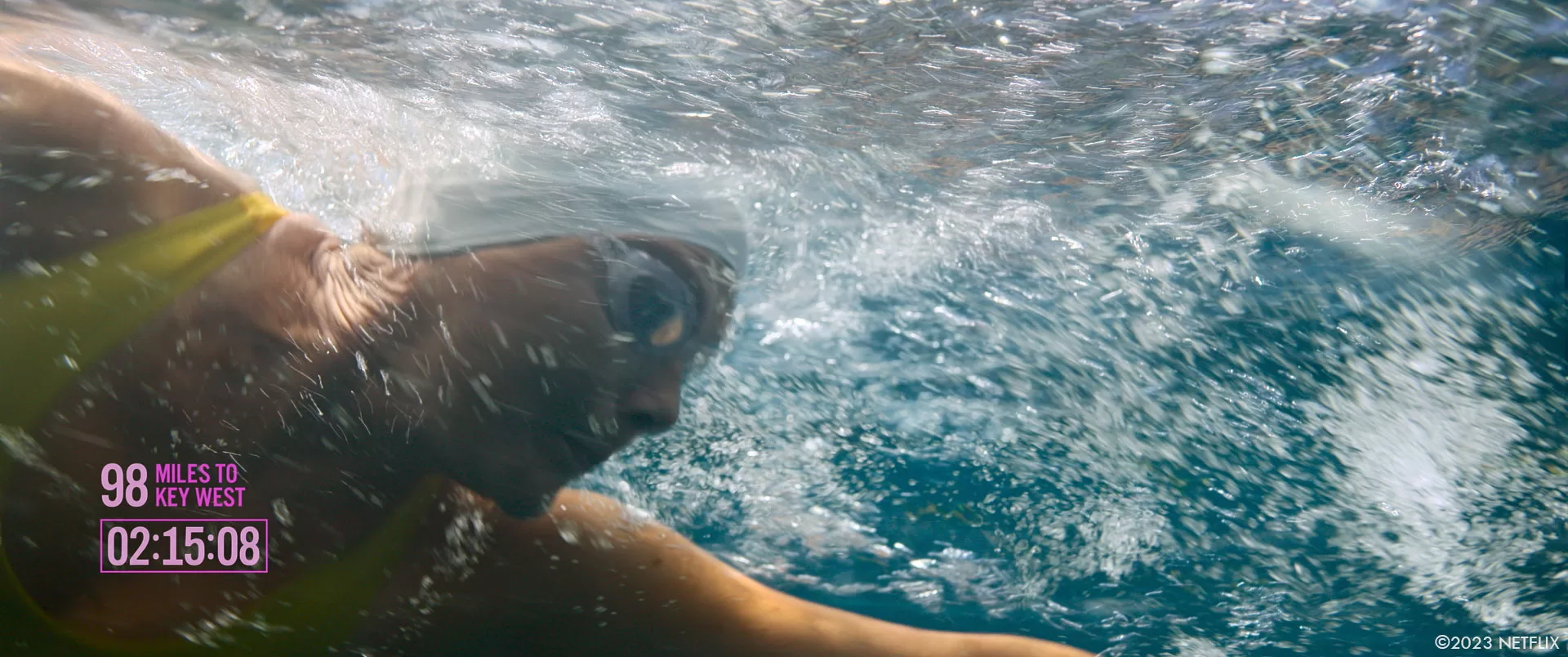
What was their approach and expectations about the visual effects?
The objective was to replace the pool water with a realistic simulation of an ocean surface in over 250 shots. Water had a pivotal role in the film, functioning almost as a supporting character. We were aware that if the audience was distracted by the CG appearance of the digital ocean in a film set entirely on water, it could potentially undermine the emotional resonance of the film.
How did you organise the work with your VFX Producer and split the work amongst the DNEG offices?
I collaborated closely with DNEG’s Executive Producer, Vera Zivny, as well as VFX Producer, Darren Spence – a true dream team! They were instrumental in managing the schedule and logistics, and ensured that I had everything I needed to focus on building the technical and creative pipeline required to tackle Nyad!
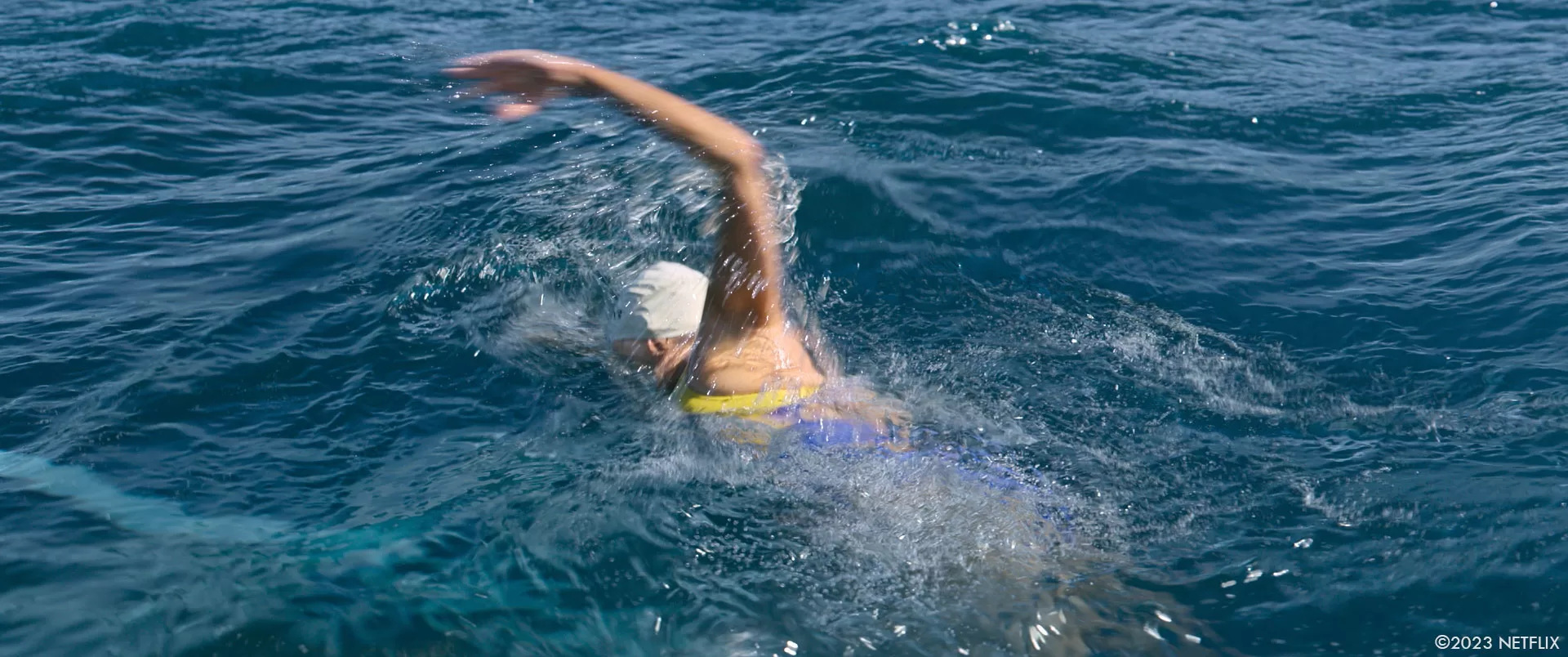
What are the sequences made by DNEG?
We contributed to the first two swim attempts, where the water current ran counter to Diana Nyad’s direction, adding another layer of complexity to the shots. We also worked on the hallucination sequence involving falling stars.
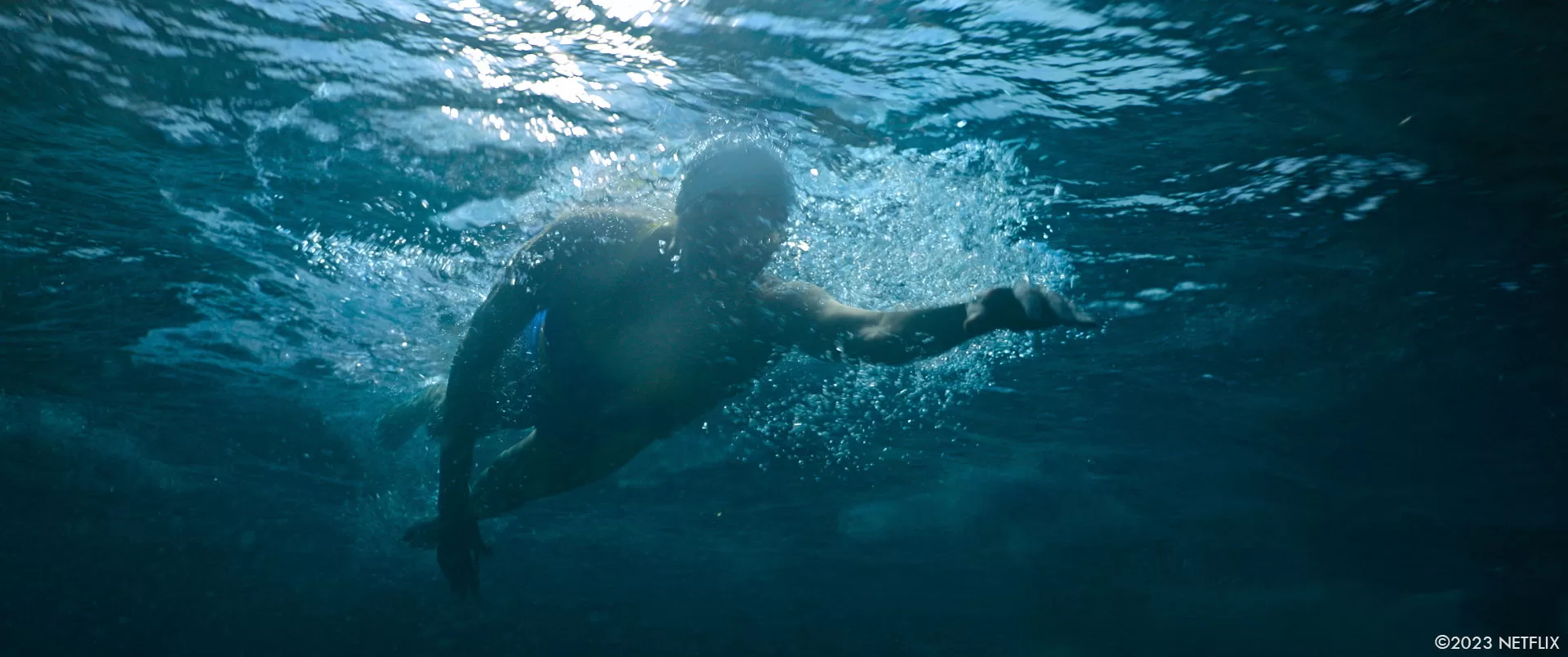
Where were your various sequences filmed?
Almost all the water scenes, barring a few drone shots, were filmed in the tank at Pinewood in the Dominican Republic. Creating this movie in the open ocean would have been nearly unfeasible if not impossible.
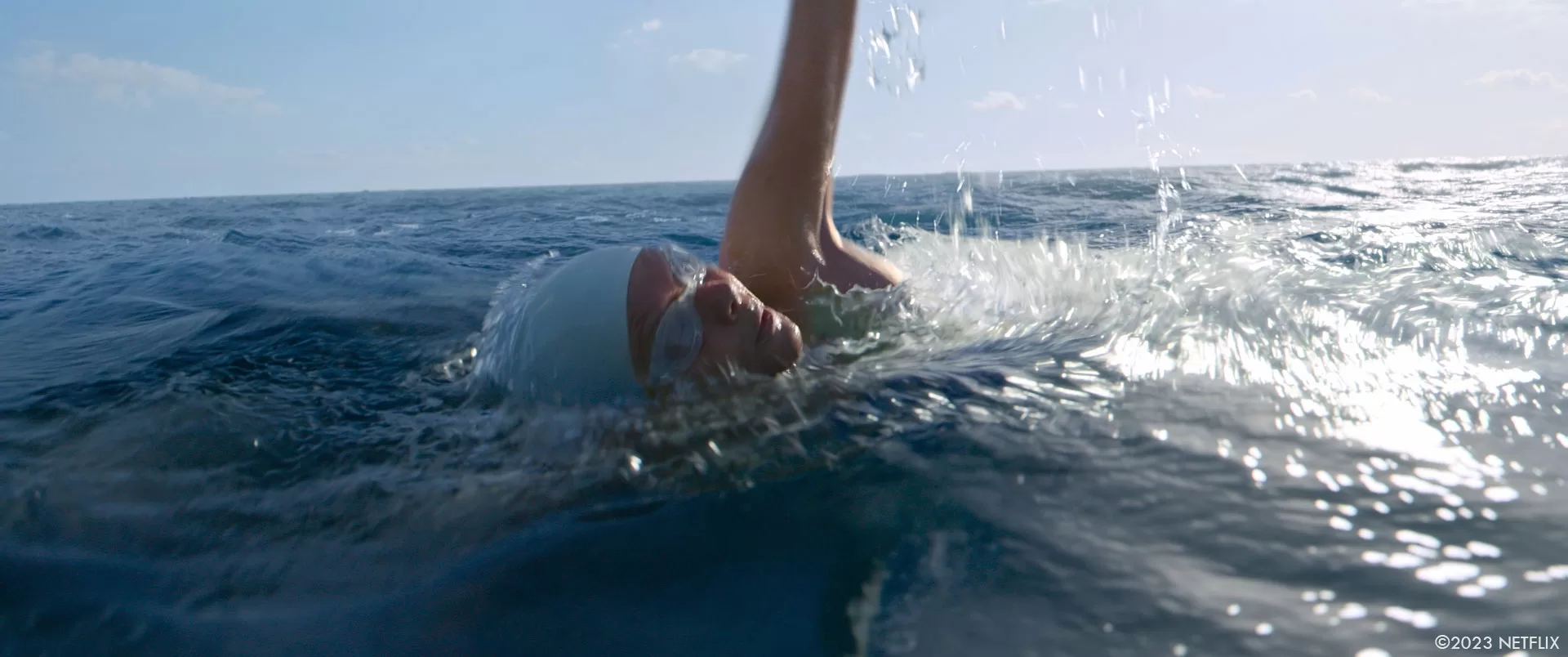
Can you share insights into the initial creative process behind the visual effects work for this project?
From the outset, Jake Braver, referred to the water as a supporting character in the film, possessing its own characteristics that shaped the story.
The water’s direction played a crucial role in illustrating Diana’s failed attempts. We aimed to showcase her struggle against the waves by replacing the plate pool water with a digital ocean implying a clear water current. However, the goal was to ensure all of these elements remained in sync with Diana’s performance.
We strived to avoid any hint of digital water replacement, allowing the audience to fully immerse themselves in the characters and their incredible emotional journey. We aimed to avoid any overly dramatic simulations that might cause distraction while ensuring there was an organic change in the water’s appearance and performance from one scene to the next, just like what one would expect from a real ocean.
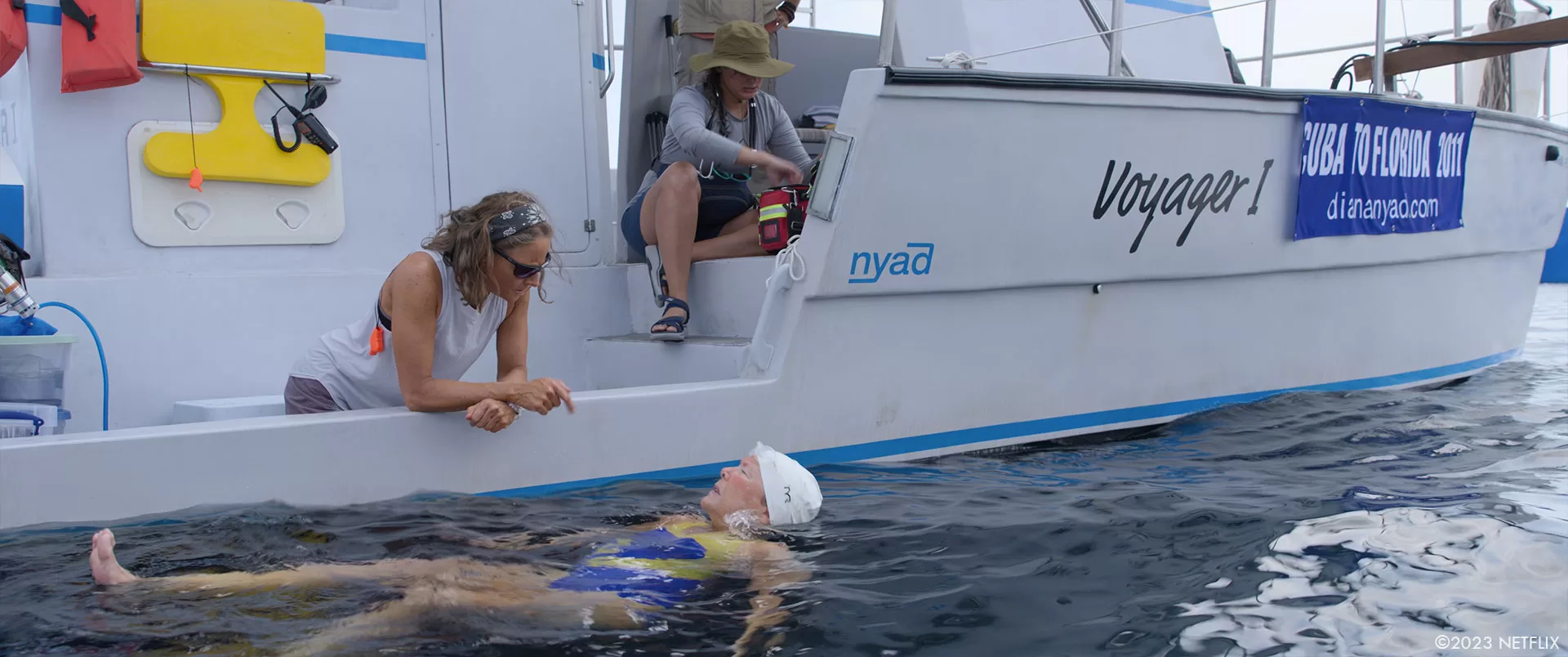
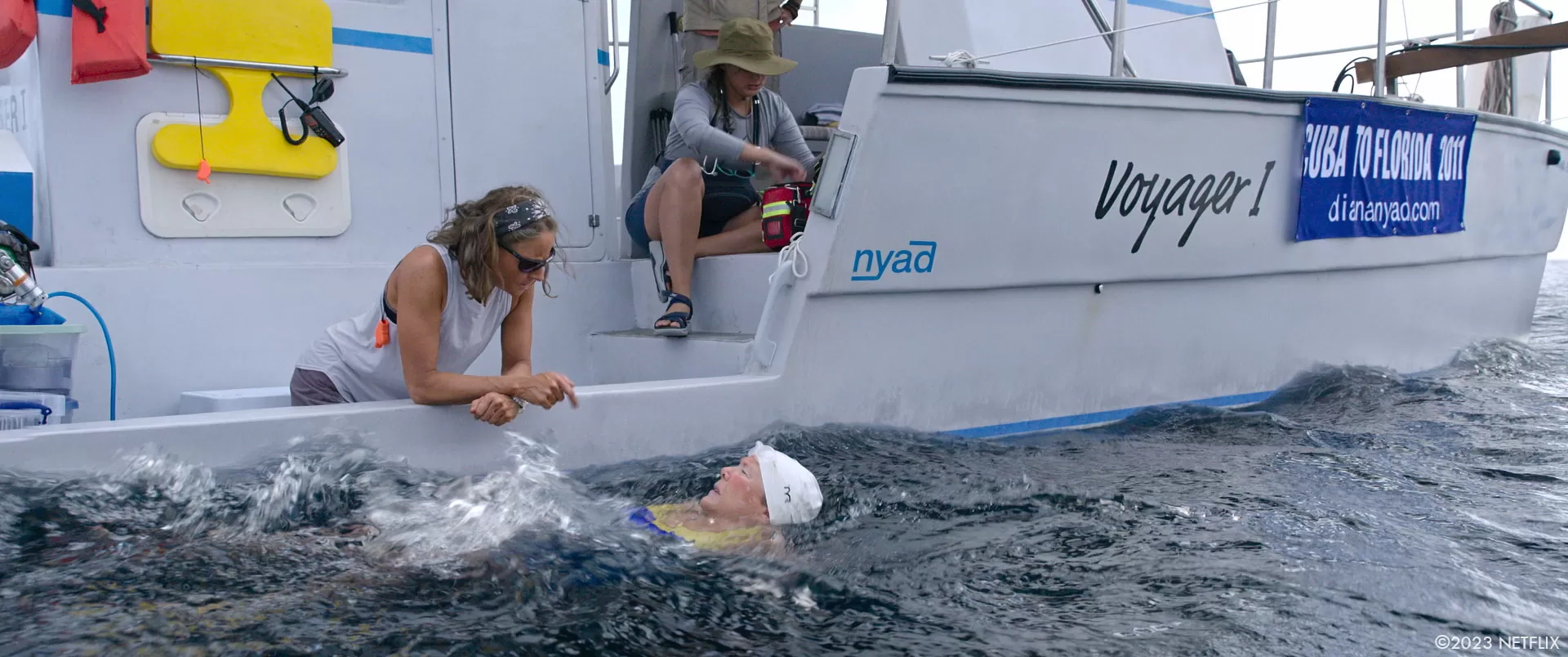
What was your approach about the water simulation in the hallucinations sequence?
The magical jelly fish would fall from the sky like falling stars and hit the water surface around Diana. We dedicated a substantial amount of time to achieving the desired aesthetic, ensuring that all elements interacted seamlessly. This was based on a physically accurate shading and lighting model that could capture multiple layers of intricate reflection and refraction, as well as multi-layered interactive lights.
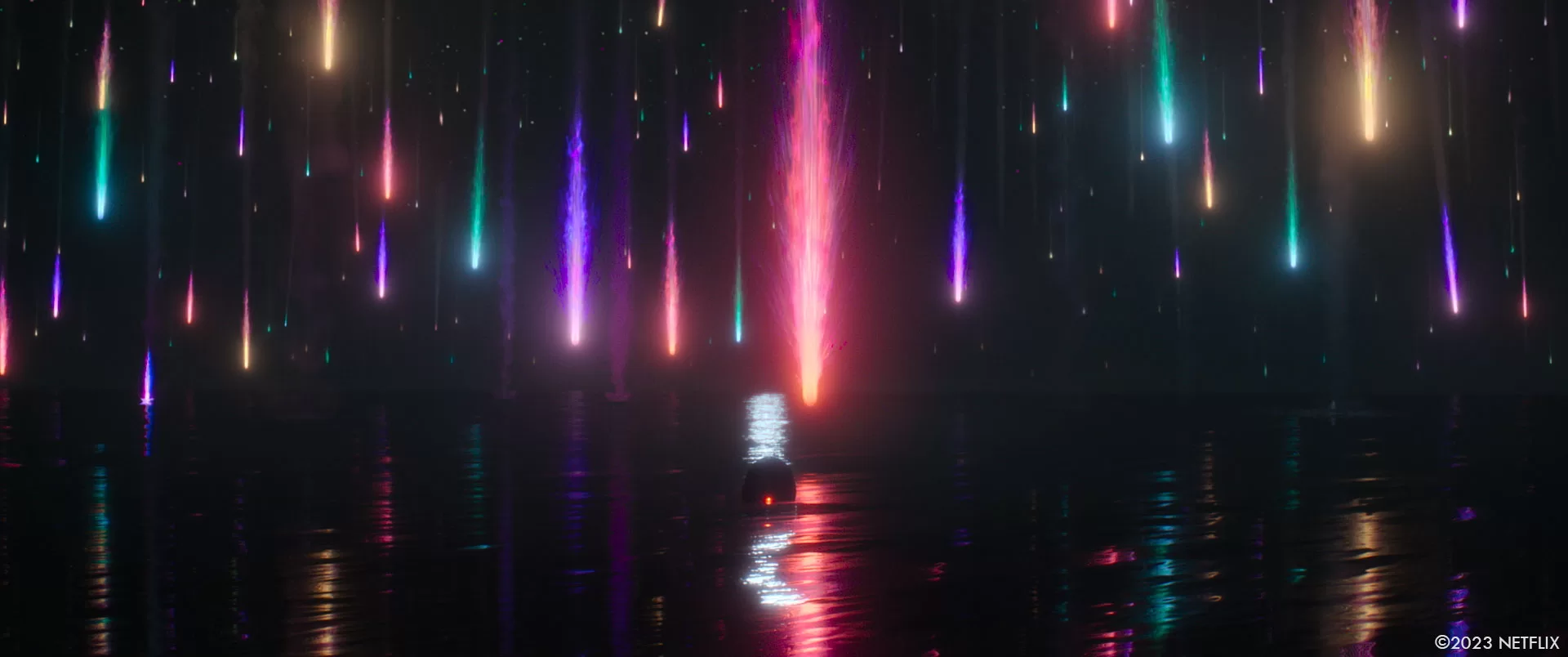
Can you elaborate about the hallucinations design and creation?
The aim was to provide the audience with an experience that was beautiful, majestic, and serene – a thoughtful flashback to Diana’s childhood. Then, in an instant, this tranquillity was shattered as the audience (and Diana) discovered that she was actually swimming among the world’s most venomous jellyfish all along!
We initiated the process with the art department and managed to finalise the look in a collaborative and iterative process with the filmmakers. We animated a robust jellyfish asset, which then controlled the motion of the advanced particle and simulation rig to achieve the magical look. The jellyfish featured interactive lighting that illuminated the underwater environment, the particulates, and marine snow. Additionally, we incorporated interactive lighting into Diana’s scenes using a lighting pass on a tracked digital double.
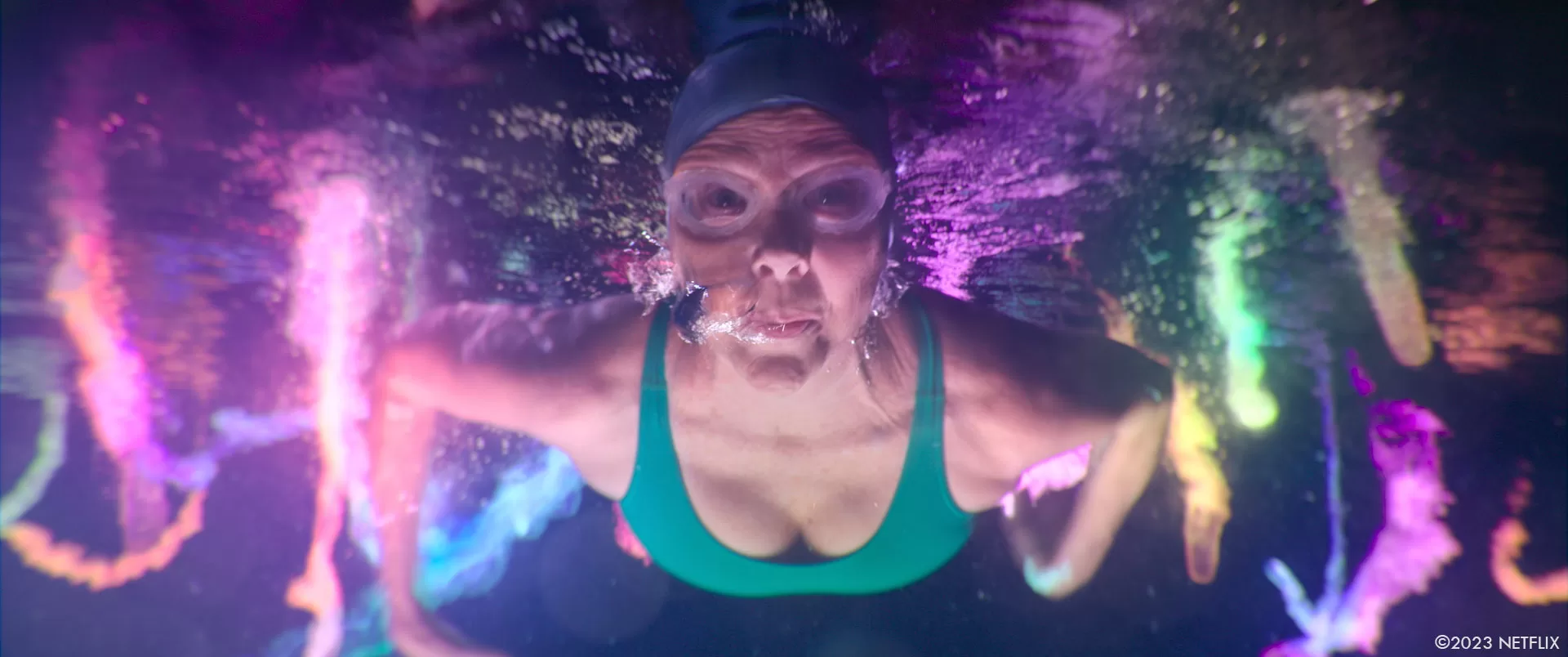
Were there specific challenges faced in creating realistic water simulations, and how did the team overcome them?
Due to the significant differences between the plate pool water and the simulated ocean characteristics, it was necessary to completely replace Diana’s reflections and refractions. We tracked Diana using a high-resolution digital double and generated matching reflections on the water surface, as well as consistent refractions. It was crucial to maintain Diana’s original plate above water and seamlessly blend them with her CG reflections and refractions. The plate water had different wave characteristics from shot to shot, with a range of amplitudes and inconsistent speeds. This variability prevented us from developing reusable templates. Each shot had to be individually adjusted to achieve the realism necessary for conveying an emotional story without any distractions.
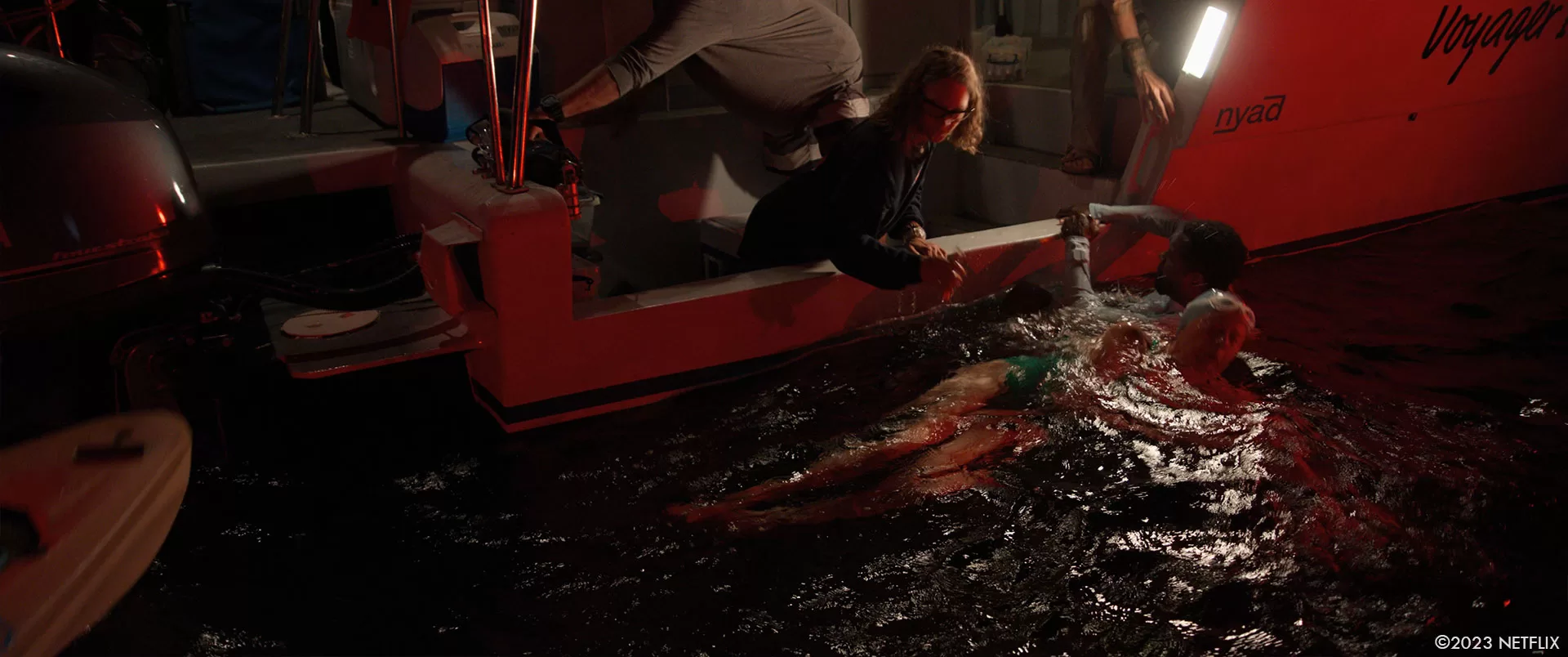
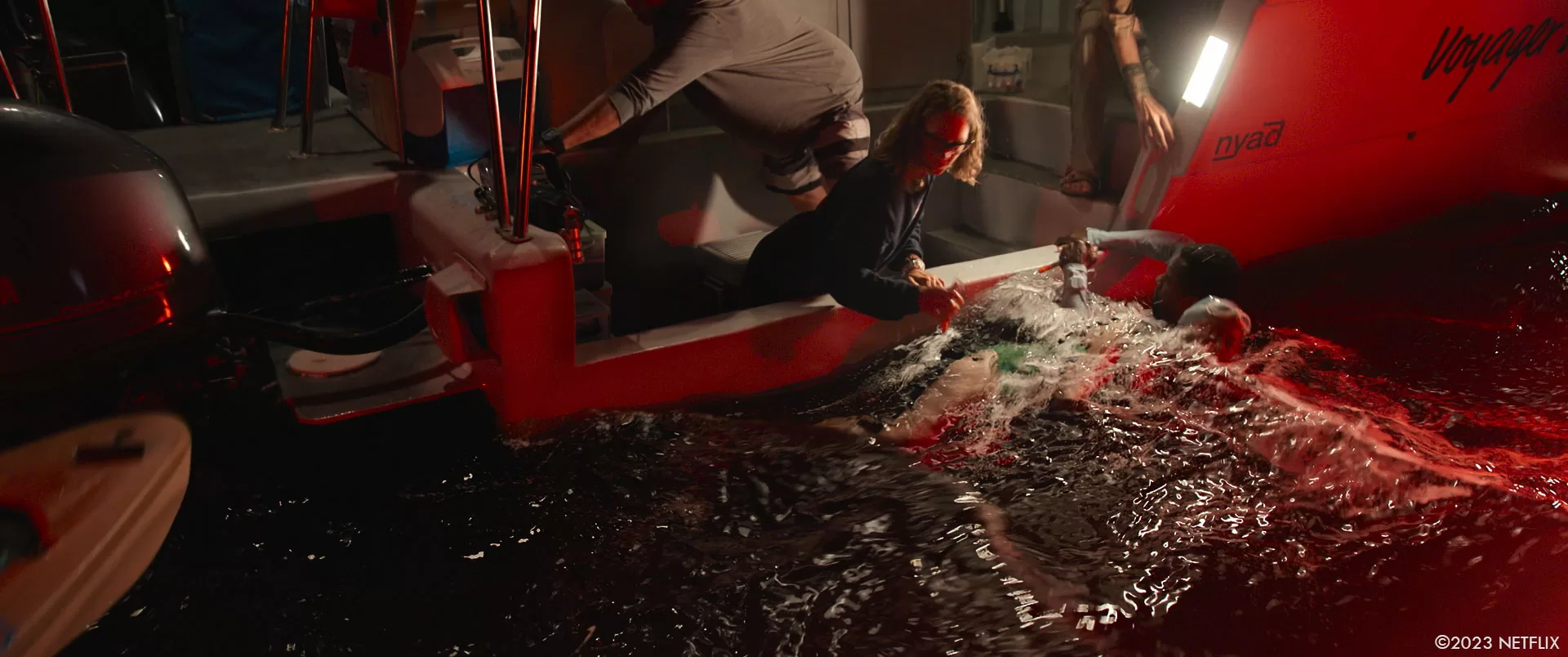
Can you highlight any innovative techniques or technologies employed in achieving the desired water sims?
The objective was to maintain a sense of consistent ocean current across each scene, while adjusting the wave characteristics on a shot-by-shot basis to ensure that the ocean complemented Diana’s performance without causing any distractions.
We developed an automated process to systematically simulate and render three different ocean sets across 250 shots. This enabled the director to meticulously select a variant that served both the story creatively and Diana’s performance technically.
Once an ocean variant was chosen for each shot, we carefully adjusted Diana’s body track to align with the new ocean variant waves. The ocean was simulated using a high-resolution flip solver. The simulation needed to appear physically accurate, yet also be controllable to prevent water splashes against the camera or Diana’s mouth during her dialogue.
To achieve accurate computer-generated refraction in sync with the replaced digital water, we replaced Diana’s underwater body entirely with a high-resolution CG model of Diana which was carefully tracked to her performance.
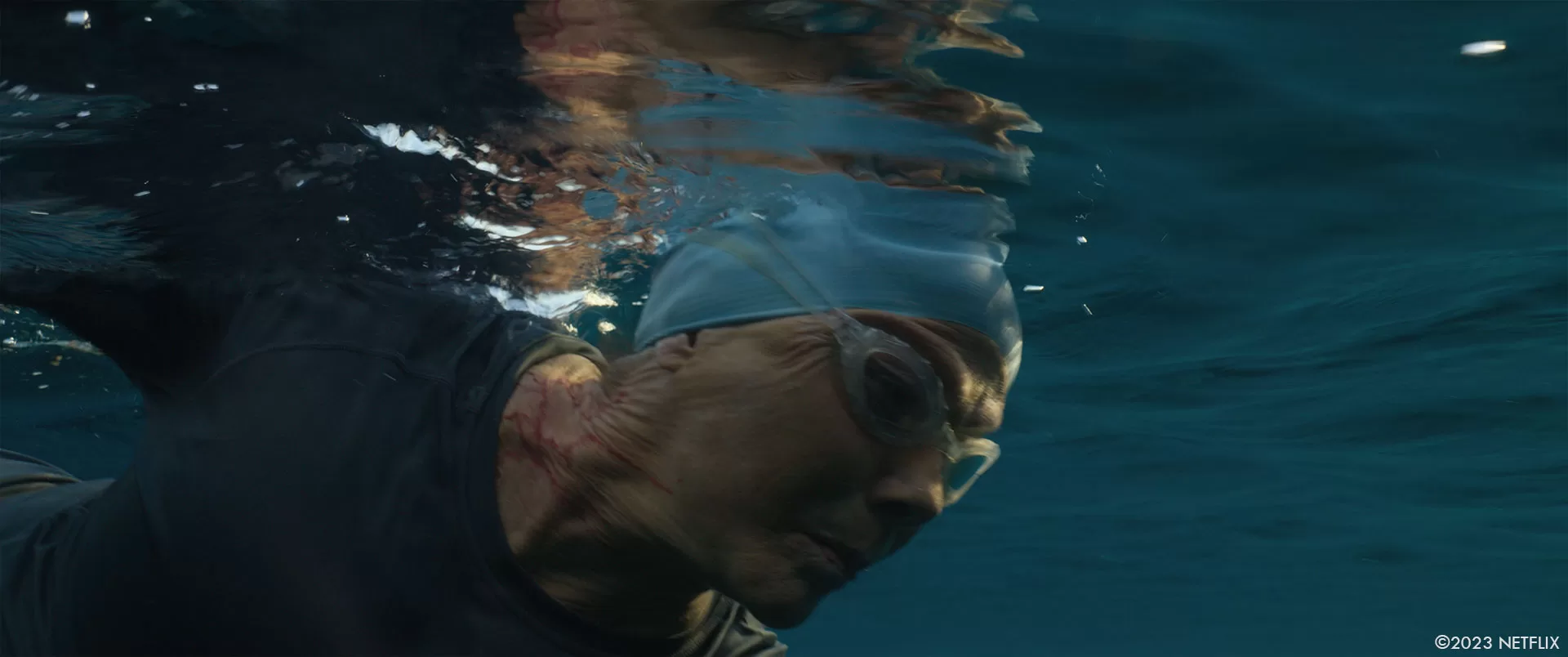

How did the collaboration between the visual effects team and other departments contribute to the seamless integration of water simulations into the scenes?
Achieving believable water replacement necessitates a carefully planned pipeline that allows for iterations without any limitation on how far back we can revisit in the process. The layout and animation department worked closely with the simulation team to ensure that Diana’s body track was moving in harmony with the simulated water, following a progressive process.
The simulation team collaborated closely with the lighting team to create a physically accurate package of water elements, foam, and bubbles. This collaboration catered to our needs to achieve physically accurate lighting and shading across all elements.
The lighting team worked diligently in tandem with the compositing department to provide enough flexibility for the compositors. This allowed them to successfully integrate Diana’s above-water elements with the digital water in a cohesive and controllable manner.
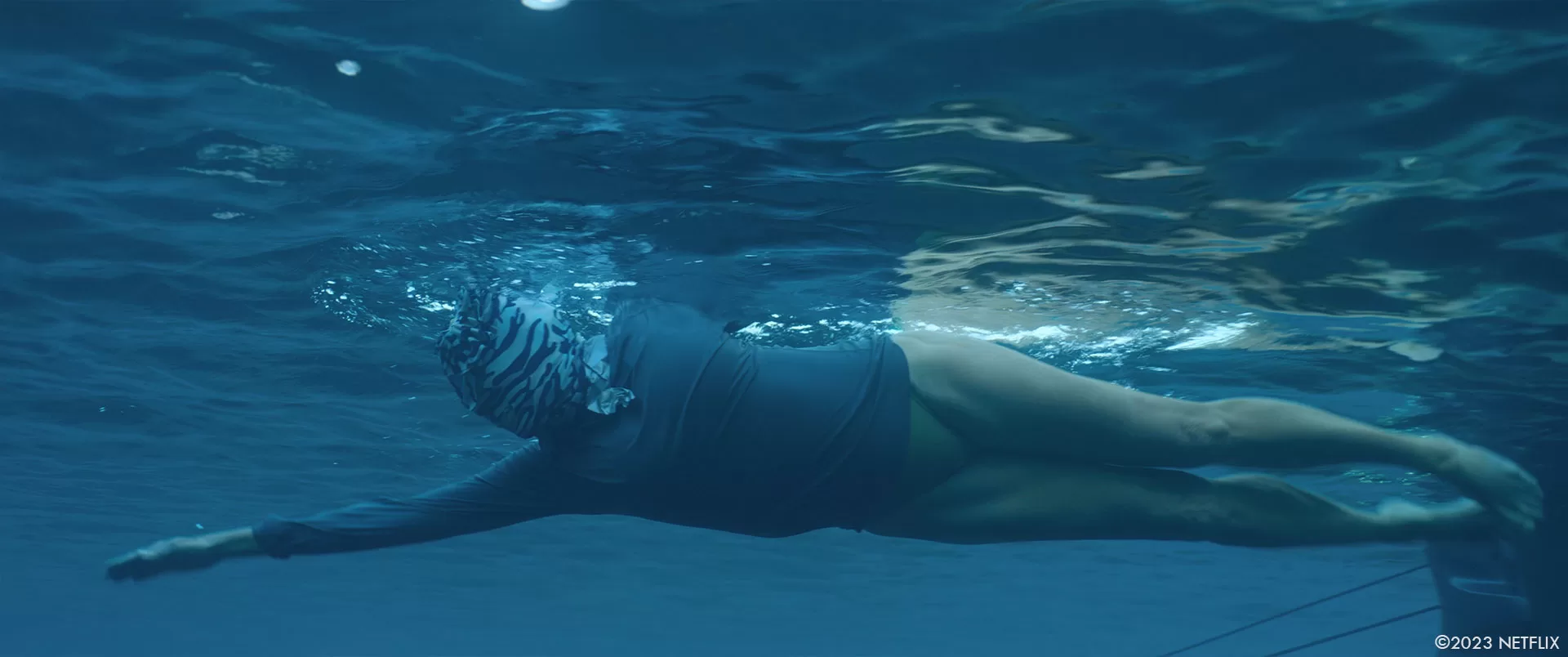
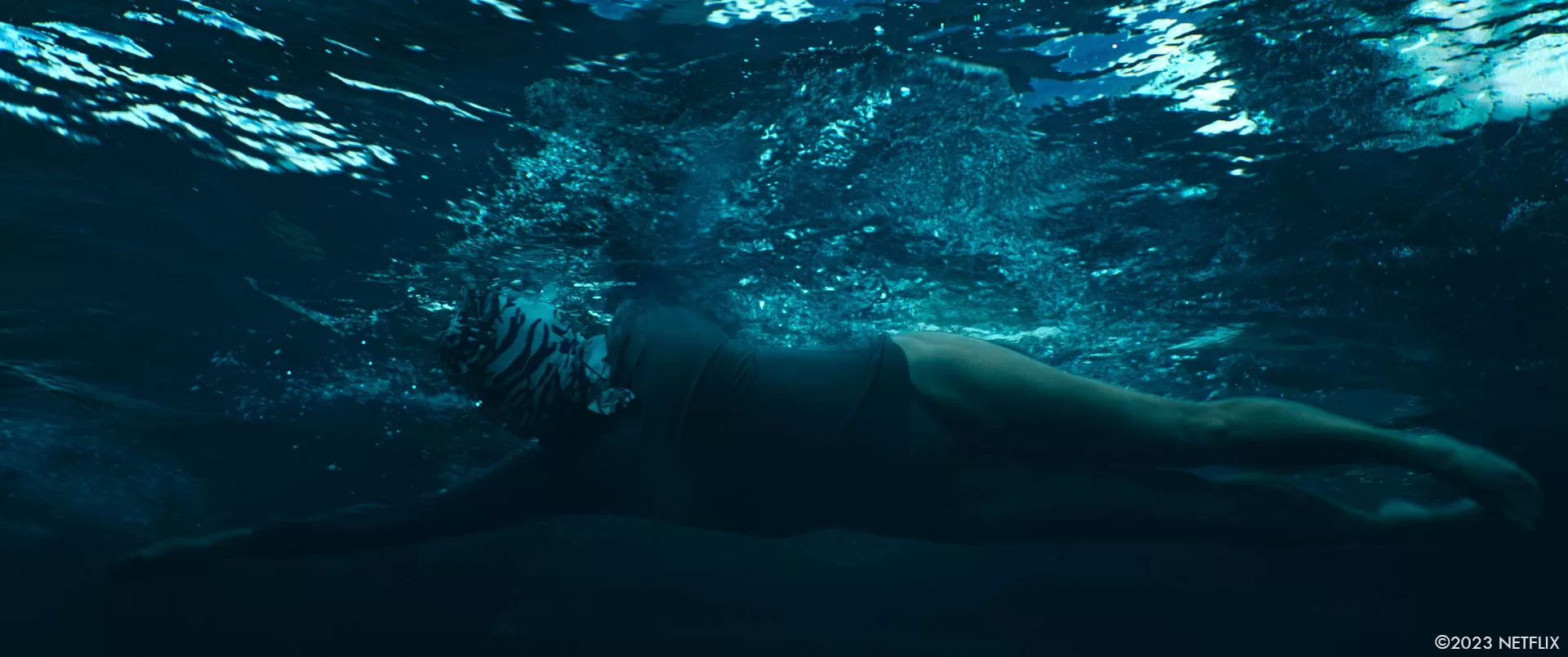
Were there any unexpected obstacles encountered during the creation of the water sims, and how were they addressed?
In a sense, each shot presented its own unique challenge. Despite the overall process being relatively cohesive, every shot required meticulous craftsmanship to seamlessly integrate Diana’s above-water element with her digital reflection and refraction, as well as the complex water simulation surrounding her.
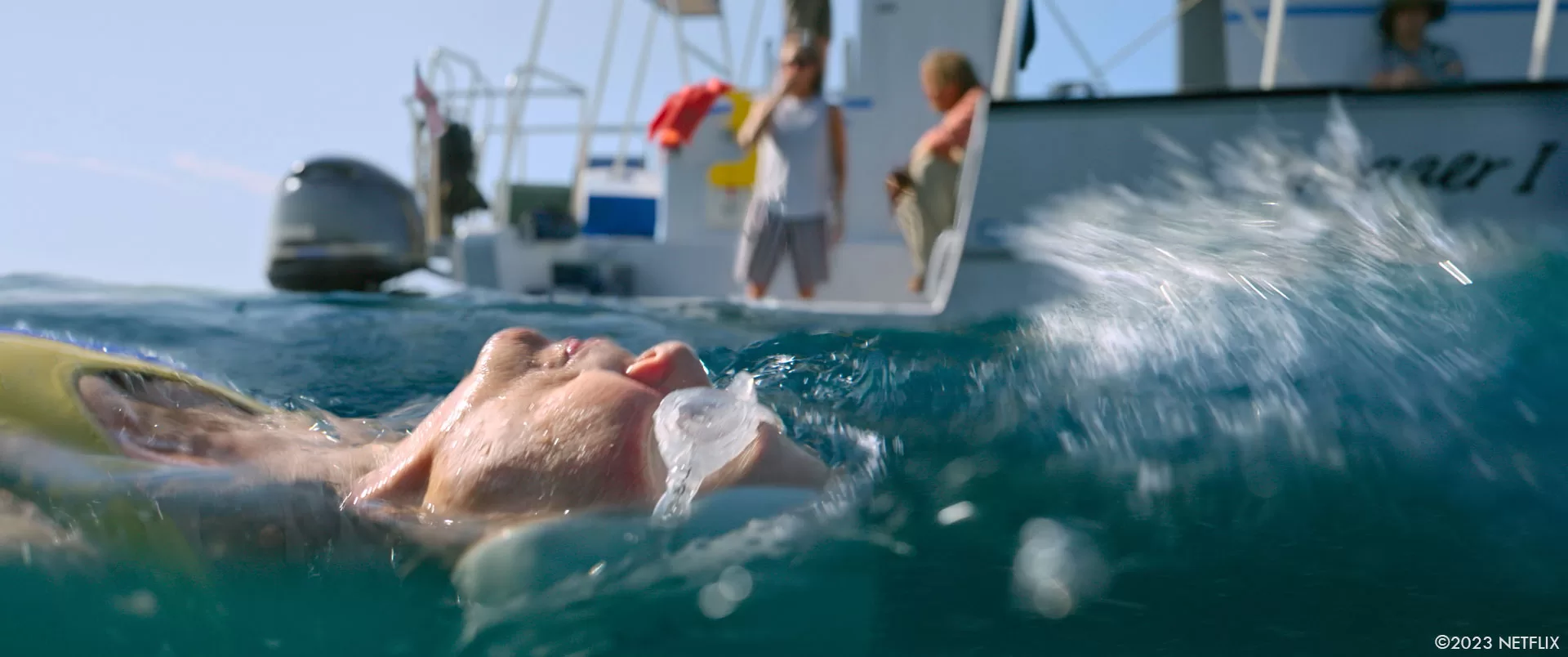
Did the project involve any unique artistic choices or stylized elements in presenting water, and what considerations were taken in making those decisions?
The water needed to possess such a high level of photorealism that viewers wouldn’t question its authenticity while watching the movie. In our sequences, the main challenge was adjusting the water’s direction and speed to align with the story, while simultaneously ensuring the water is in sync with Diana’s performance. Additionally, we had to ensure that water splashes did not obscure the camera or create excessive distractions in the sequence. It was very important to have a pipeline that permitted all these requirements in a robust and iterative manner.
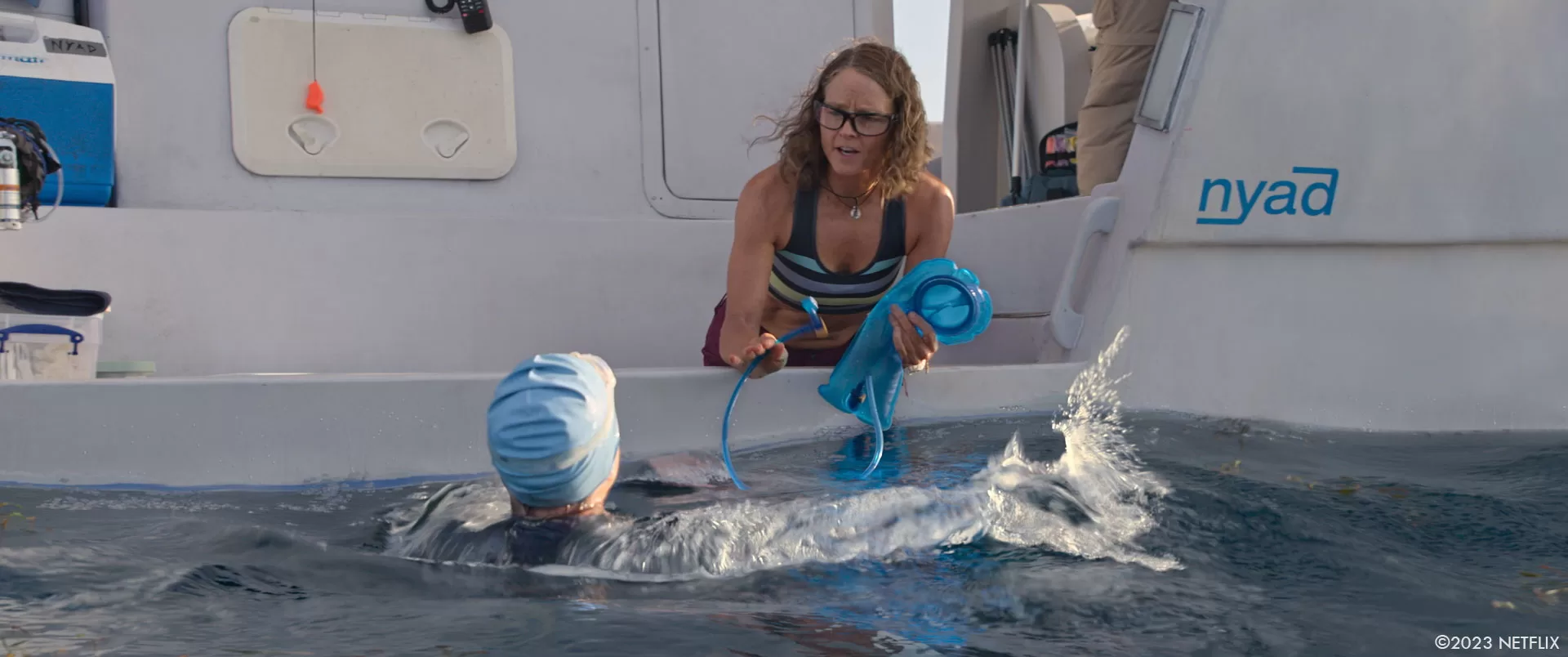
Which sequence or shot was the most challenging?
In a substantial number of shots, the boat needed to be completely replaced with a high-resolution digital version to incorporate a full 3-dimensional rocking effect that was absent in most of the original footage. In these instances, we not only had to replace the water, but also the boat.
In one of the shots the Doctor is in the water hanging off the boat’s edge, and another character, Bunny, is on the boat interacting with Diana. The movements of both characters in the water had to be adjusted to align with the new digital ocean and the digitally replaced boat with its updated rocking motion.
Our goal was to replace everything but the characters while still maintaining the photorealism of the shot and avoiding any distractions.
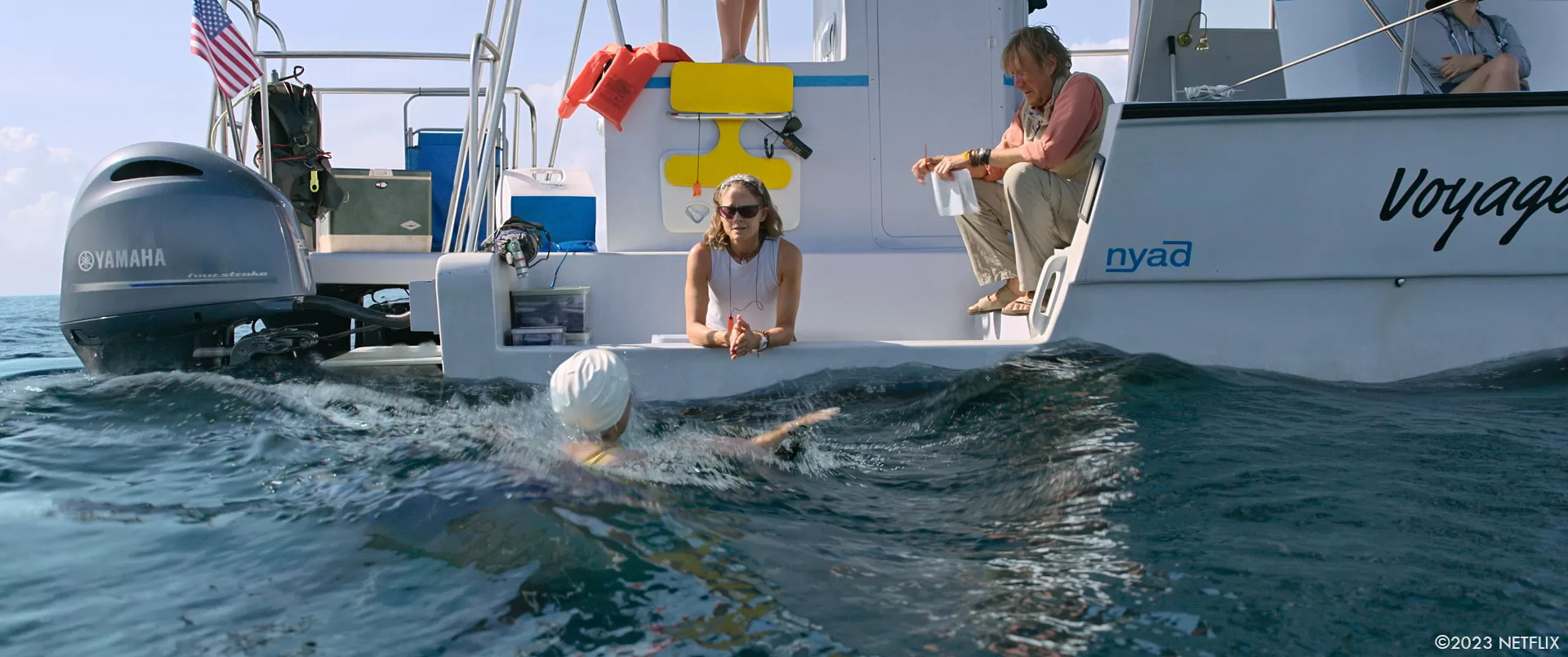
Were there something specific that gave you some really short nights?
We knew that any issue on any shot that could cause even the slightest distraction would significantly impact the emotional grip and the real sense of urgency that the film was trying to convey. Some shots needed a lot more time to get to that absolute photoreal level. Definitely a big responsibility on our shoulders to make sure we do our part the best we can to help tell Diana Nyad’s inspiring story.
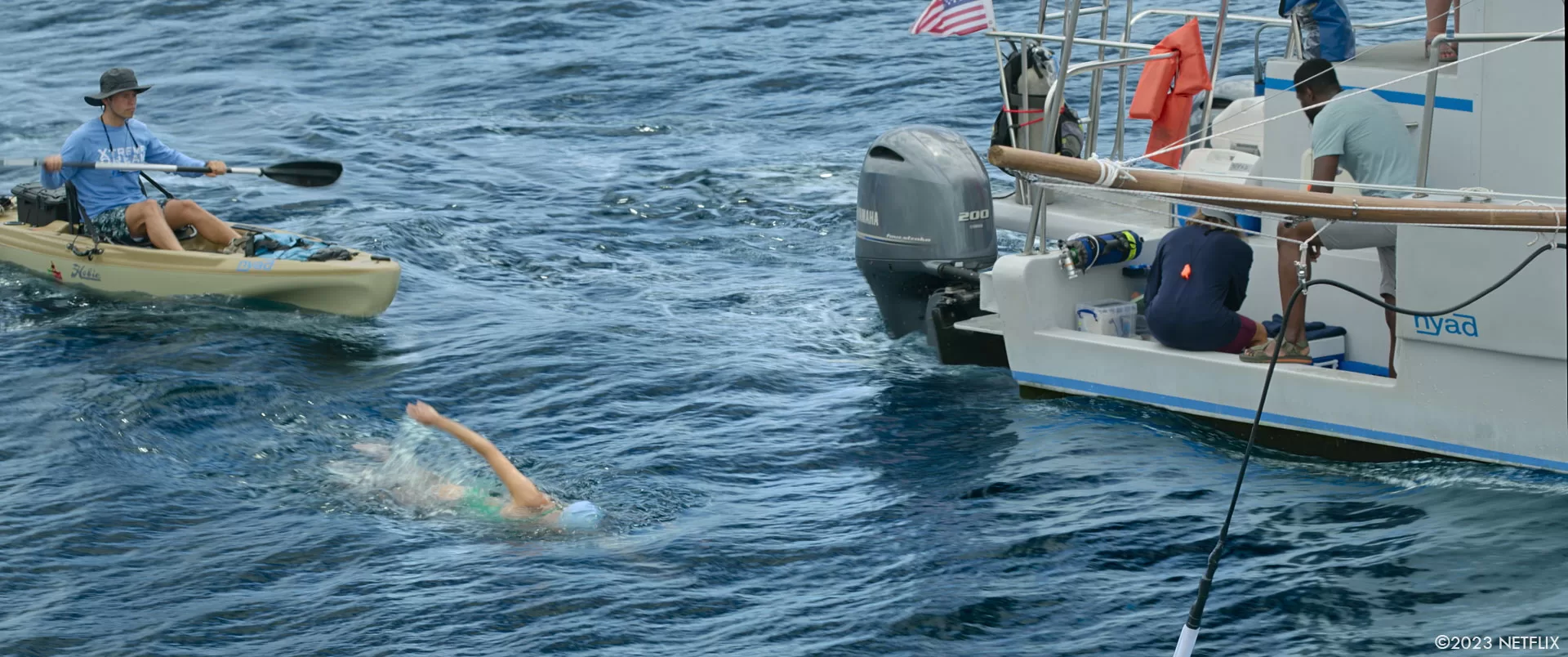
What is your favourite shot or sequence?
My favourite shot is our initial lookdev shot. I think it is one of the best closeup digital water I have seen. Absolutely flawless!
What is your best memory on this show?
Supervising VFX is akin to conducting a symphony orchestra. It involves working with numerous talented artists from diverse backgrounds and perspectives. My objective is always to bridge the gap and unite the team towards a common goal. Nyad was a challenging project that required a unified team effort at every stage. We approached the delivery of Nyad with the same collaborative mindset that Diana and her team used to reach the shore!
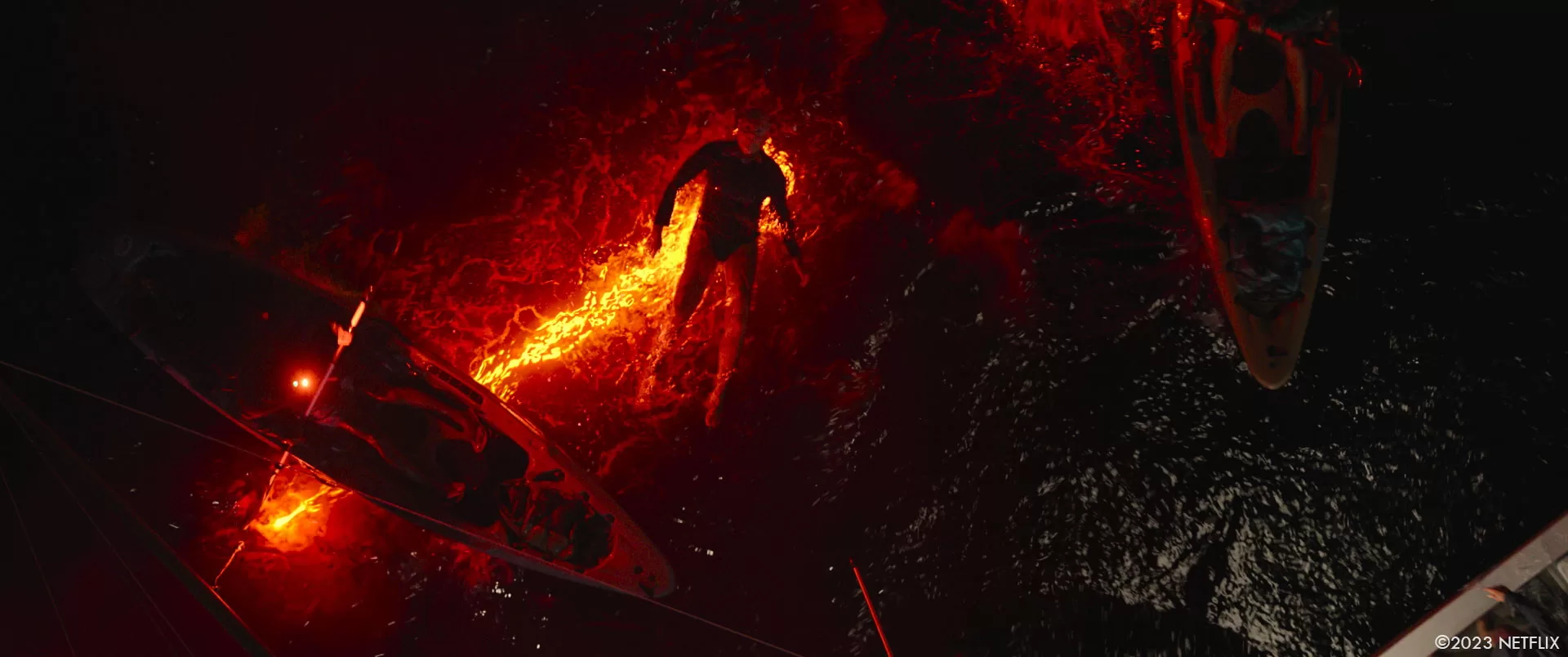
How long have you worked on this show?
The work started in November 2022, and we completed delivery around August 2023.
What’s the VFX shots count?
DNEG completed 250 shots, out of which 225 required extensive water replacement.
A big thanks for your time.
WANT TO KNOW MORE?
DNEG: Dedicated page about Nyad on DNEG website.
Jake Braver: Here’s my interview of Production VFX Supervisor Jake Braver.
Netflix: You can watch Nyad on Netflix now.
© Vincent Frei – The Art of VFX – 2024






